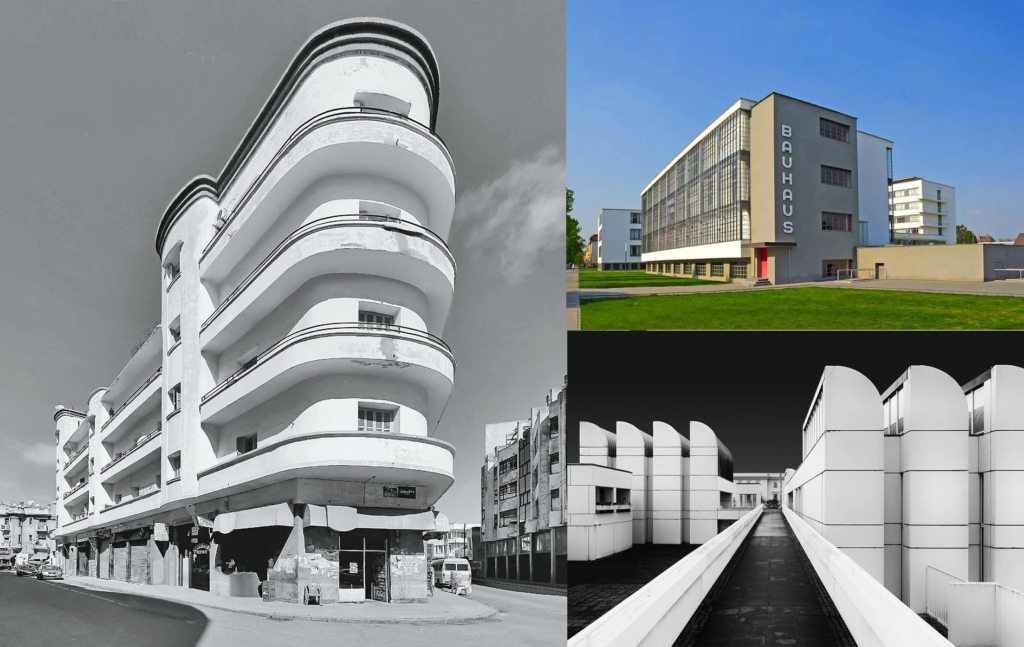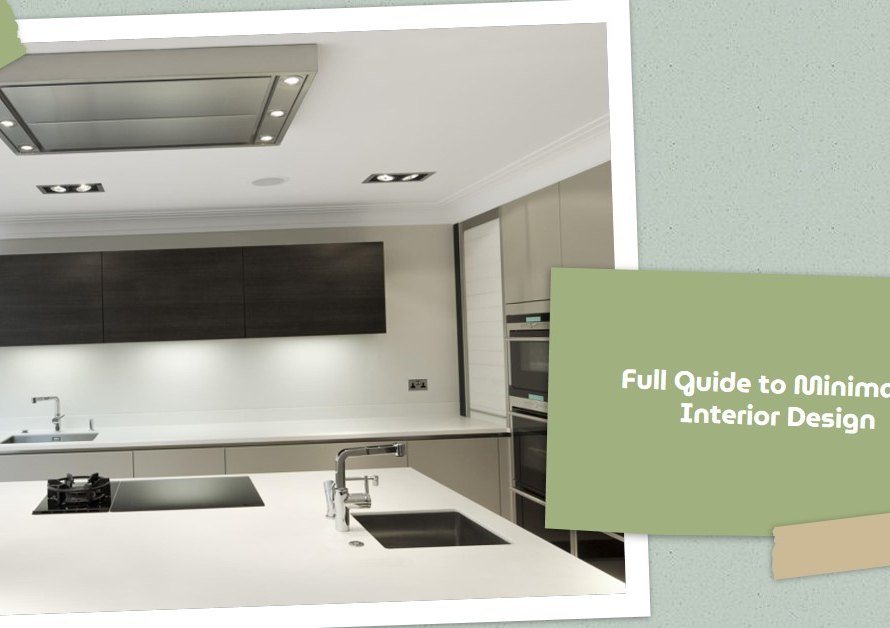
Table of Contents
The Origins of the Bauhaus Movement
The origins of the Bauhaus movement can be traced back to the early 20th century in Germany. In 1919, architect Walter Gropius founded the Bauhaus School in Weimar with a bold vision to bridge the gap between fine arts and craftsmanship. Gropius sought to create a space where artists, architects, and designers could collaborate and explore new possibilities in design and architecture.
The socio-political climate of post-World War I Germany provided fertile ground for the development of such an avant-garde movement. The Bauhaus was not simply an art school but a response to the changing world order, seeking to establish a new aesthetic for modern times. Its proponents believed that by placing art at the service of society, they could contribute to its overall advancement and improvement.
With its emphasis on functionalism, simplicity, and harmony between form and function, Bauhaus quickly gained recognition as a revolutionary movement in architecture. It advocated for clean lines, geometric shapes, and integration of different art forms into architectural designs. These principles aimed at creating spaces that were not just visually appealing but also practical and efficient for everyday use.
The rise of industrialization played a crucial role in shaping Bauhaus ideas as well. The movement embraced machine-made materials and mass production techniques as means to enhance accessibility while maintaining high standards of quality.
By bringing together artists from various disciplines like painting, sculpture, design, theater, photography under one roof or rather one school; talents were nurtured across multiple mediums resulting in cross-poll
The Key Influences on the Bauhaus Movement
The Bauhaus movement, a revolutionary force in the field of design and architecture, was greatly influenced by various factors that shaped its principles and aesthetics. One major influence came from the Deutscher Werkbund (German Association of Craftsmen), which advocated for the integration of art, craft, and industry. This organization aimed to bring together designers, craftsmen, and industrialists to create high-quality products accessible to all. The Werkbund’s emphasis on functionalism and collaboration laid the foundation for the ideas that would ultimately define the Bauhaus.
Another crucial influence on the Bauhaus movement was the Arts and Crafts movement, particularly as it manifested in Britain. Led by figures like William Morris, this movement sought to revive traditional craftsmanship in response to mass production during the Industrial Revolution. The Arts and Crafts movement emphasized simplicity of form, attention to detail, and a belief that well-designed objects could improve people’s lives. These principles resonated with key members of the Bauhaus such as Walter Gropius and Mies van der Rohe who adopted similar values in their architectural designs.
Additionally, avant-garde movements like Constructivism had a significant impact on shaping the aesthetic language of the Bauhaus. Originating in Russia following the Bolshevik Revolution, Constructivism rejected decorative ornamentation in favor of functional design rooted in factories and machinery. This rejection of traditional forms dovetailed with one of Gropius’ fundamental tenets: form follows function. The geometric shapes and clean lines synonymous with Constructivism can be
The Principles and Characteristics of Bauhaus Architecture
The principles and characteristics of Bauhaus architecture are what truly set it apart from other architectural movements. The guiding principle of Bauhaus architecture is the merging of art and functionality. This means that every aspect of a building, from its layout to its furnishings, should serve a purpose while also being aesthetically pleasing.
One characteristic of Bauhaus architecture is its emphasis on geometric forms and clean lines. This can be seen in the iconic flat roofs, straight walls, and minimal ornamentation that defined many buildings of this style. Another characteristic is the use of new materials and technology. Bauhaus architects were at the forefront of innovation, incorporating materials such as steel, glass, and concrete into their designs. This not only allowed for more flexible and creative structures but also reflected the modern spirit of the movement.
Overall, Bauhaus architecture was driven by a desire for simplicity, functionality, and adaptability to modern life. It aimed to create buildings that were harmonious with their surroundings while also ensuring a high level of practicality and efficiency. These principles and characteristics continue to inspire architects today and contribute to the lasting legacy of this influential architectural movement.
The Impact and Legacy of the Bauhaus Movement
The impact of the Bauhaus movement in architecture cannot be overstated. Its innovative and forward-thinking approach to design and construction revolutionized the field, leaving a lasting legacy that continues to influence architects and designers today. One of the key contributions of the Bauhaus was its emphasis on functionality and simplicity. Rejecting ornamental excesses of previous architectural styles, Bauhaus buildings stripped away unnecessary embellishments in favor of clean lines and geometric shapes.
This minimalist aesthetic not only reflected a shift in societal values towards efficiency and rationality but also anticipated future developments in modern architecture. The Bauhaus’ focus on blending art with everyday life also had a profound impact on interior design. By integrating artistic principles into functional objects, such as furniture and household items, the movement sought to elevate the quality of daily living for all people, not just the wealthy elite.
The long-lasting legacy of the Bauhaus lies not only in its physical structures but also in its pedagogical philosophy. The movement’s experimental approach to education emphasized interdisciplinary collaboration, encouraging students to explore various artistic mediums alongside their architectural studies. This holistic learning environment produced graduates who were skilled not just in designing buildings but also capable of approaching challenges from multiple perspectives.
The influence of these pedagogical principles can be seen today in design schools around the world that emphasize interdisciplinary learning and encourage exploration beyond traditional boundaries. Overall, whether through its iconic designs or educational philosophies, the Bauhaus has left an enduring imprint on architectural theory and practice that continues to shape our built environment and
Examples of Iconic Bauhaus Buildings
One of the most famous examples of an iconic Bauhaus building is the Bauhaus Dessau, located in Germany. Designed by Walter Gropius, this modernist masterpiece exemplifies the principles of simplicity and functionality that are characteristic of the Bauhaus movement. With its clean lines, white façade, and innovative use of materials such as glass and steel, the Bauhaus Dessau has become a symbol of modern architecture.
Another notable example is the Fagus Factory in Alfeld, Germany. Designed by Walter Gropius and Adolf Meyer, this factory was one of the first buildings to fully embody the ideas and principles of the Bauhaus movement. It features a distinctive glass curtain wall façade supported by reinforced concrete columns, creating a sense of transparency and lightness. The Fagus Factory showcases how architecture can integrate industrial design into its form and function seamlessly.
The Barcelona Pavilion in Spain is another iconic example that demonstrates the influence of Bauhaus on international architecture. Designed by Ludwig Mies van der Rohe for the 1929 International Exposition in Barcelona, this building embodies elegance in simplicity with its minimalist design and use of luxurious materials such as marble, travertine, and chrome-plated steel. The pavilion’s open plan layout blurs boundaries between indoor and outdoor spaces while creating a harmonious flow that echoes the core principles of Bauhaus design.
These buildings continue to inspire architects worldwide for their timeless beauty combined with innovative design concepts born out of the influential Bauhaus school’s philosophy. They epit
Conclusion: The Enduring Influence of the Bauhaus Movement
In conclusion, the Bauhaus movement has left a lasting impact on architecture and design that continues to be felt today. Its emphasis on simplicity, functionality, and the marriage of art and industry revolutionized the way buildings were conceived and constructed. This minimalist approach has not only shaped the aesthetics of modern architecture but has also influenced other design disciplines such as furniture, graphic design, and even fashion.
One of the enduring legacies of the Bauhaus movement is its focus on experimentation and interdisciplinary collaboration. The school brought together artists, architects, craftsmen, and technicians to create a holistic approach to design. This spirit of collaboration challenged traditional hierarchies in artistic expression and resulted in innovative solutions that made use of new materials and techniques. Today, this mindset is still celebrated in contemporary architecture with firms often forming multidisciplinary teams to tackle complex projects.
Furthermore, the social ideals behind the Bauhaus movement have proven to be just as influential as its aesthetic principles. The Bauhaus aimed to create designs that would enhance people’s lives while also being accessible to all socio-economic classes. This concept of designing for society as a whole rather than individual clients has permeated modern architectural practice where sustainability and inclusiveness are valued more than ever before.
In summary, although founded over a century ago, the influence of the Bauhaus movement can still be seen in countless architectural masterpieces around the world today. Its principles continue to shape how we conceptualize space and strive for social progress through design. As we look back at this iconic movement


